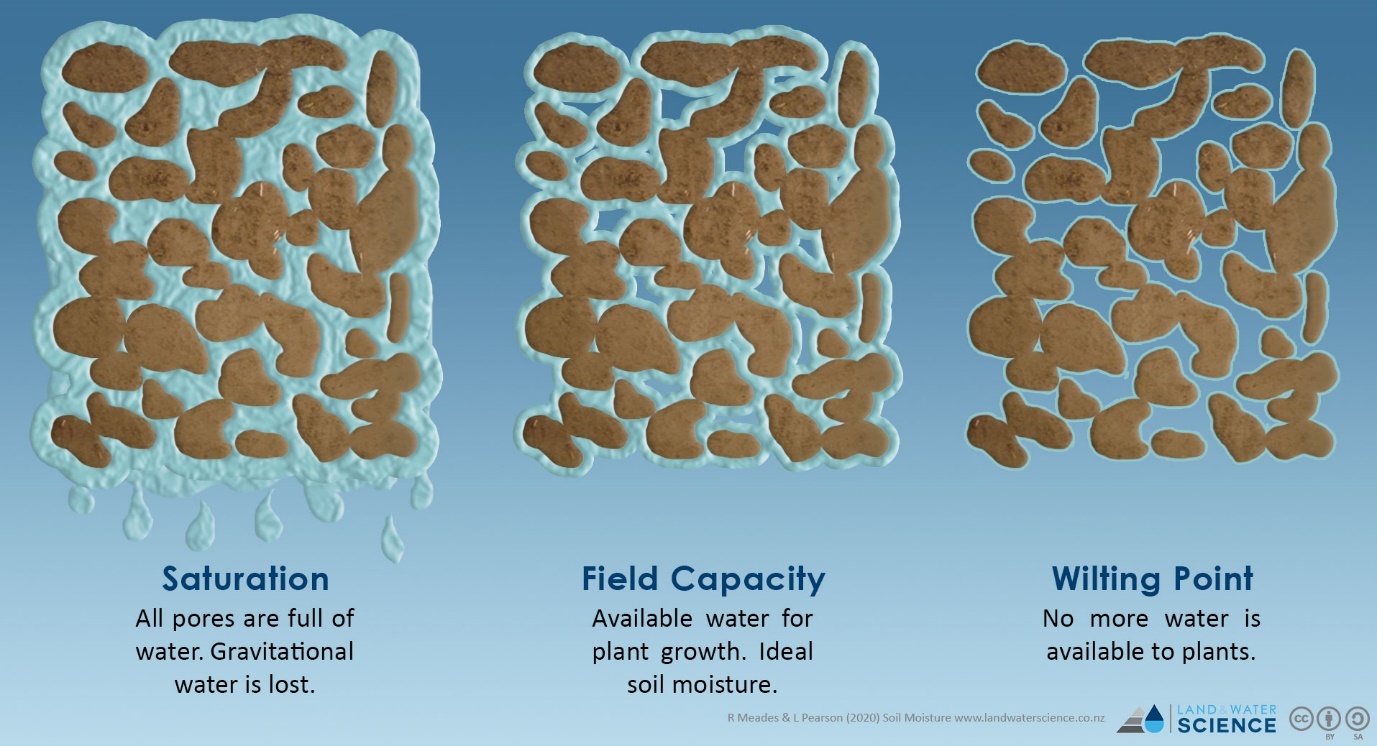Storage of effluent and deferred irrigation
What
To keep effluent nutrients in the root zone, effluent irrigation requires balancing the water applied through irrigation and the existing soil moisture content.
Deferred irrigation is when irrigation is delayed (deferred) until there is a large enough soil water deficit to allow for more water to be added to the soil without causing runoff, ponding, or leaching. Deferred irrigation requires sufficient effluent storage ponds.
Why
Sufficient effluent storage enables the irrigation of effluent at a time that suits the environmental conditions, and as a result maximises the nutrient and water value of the effluent.
Utilising effluent as a valuable nutrient source for plant growth will also minimise contamination of groundwater and surface water. Lost nutrients are a financial and production loss to the farming system.
Issues arise when there is insufficient storage capacity on farm or effluent application rates or application depths exceed the soil moisture conditions, specifically field capacity.
Soil Moisture
Field capacity refers to the amount of water held in the soil after excess water has drained away. Soils reach field capacity typically a day or so after soil saturation (e.g., from rain or irrigation).
The amount of water which can be added to the soil before it reaches field capacity is known as the soil water deficit. It is the amount of available water removed from the soil within the crop\‘s active rooting depth.
A soil water deficit occurs because of drainage and evapotranspiration and the soil water deficit decreases when water is added to the soil by rainfall or irrigation. A soil water deficit occurs when water is exiting the soil profile faster than it is coming in.
Adding water/effluent at or above field capacity will result in ponding, runoff or leaching. The greater the application depth and rate of the irrigator (i.e., high rate vs. low rate applicators), the greater the soil water deficit required for irrigation.

It may not be appropriate to proceed with effluent irrigation if:
The soil is too wet following rainfall as effluent may pond, run off to waterways, or leach through to groundwater.
The soil is very dry and cracked, especially over tile or mole drains – effluent may travel through soil cracks to underground drains and then flow into waterways.
It is important to make sure that application depth and intensity do not exceed the soil water deficit or the application limit on your consent at any time, to prevent ponding or runoff to waterways.
If you use technology to determine the soil moisture deficit, get a qualified technician to calibrate the system for your farm and provide a soil moisture deficit range for safe irrigation. Make this system simple for the farm team to use.
Things to consider
Soil conditions at time of effluent application.
Ensure technological equipment is properly calibrated and a moisture deficit range is set for your farm.
Weather forecast to account for future rainfall.
Follow this link to a Dairy Effluent Storage Calculator by DairyNZ.
References
Monaghan, R. M., & Smith, L. C. (2004). Minimising surface water pollution resulting from farm‐dairy effluent application to mole‐pipe drained soils. II. The contribution of preferential flow of effluent to whole‐farm pollutant losses in subsurface drainage from a West Otago dairy farm. New Zealand Journal of Agricultural Research, 47(4), 417-428.
Woodward, S. J. R., Barker, D. J., & Zyskowski, R. F. (2001). A practical model for predicting soil water deficit in New Zealand pastures. New Zealand Journal of Agricultural Research, 44(1), 91-109.